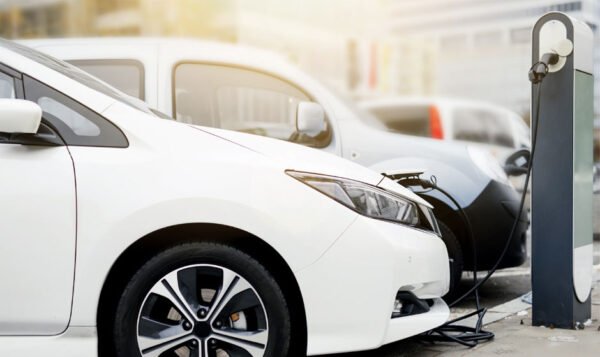Buying a Pre-Owned Vehicle: Tips for Smart Shopping

Key Takeaways
- Always investigate the vehicle’s history and actual market value before moving forward.
- Professional inspections and comprehensive test drives are non-negotiable steps.
- Secure your financing in advance and be ready to negotiate every term.
Introduction
Purchasing a pre-owned vehicle is a practical way to secure reliable personal transportation while stretching your budget. Savvy buyers know that with careful planning and research, you can confidently find quality options and avoid many common pitfalls facing used car shoppers. If you’re considering a used vehicle, it’s worth checking inventory from reputable sources; for example, you can browse current Toyota used cars to find models that fit your needs and price range.
The process is about more than just kicking tires; it requires vigilance, attention to detail, and a clear understanding of what you want, especially in 2025’s competitive market. Whether shopping for your first car or your next family vehicle, following best practices can help you land a used vehicle that serves you well for years. These tips offer a step-by-step approach to entering the used car market with confidence and discernment.
It’s also helpful to consider the avenues available for your search. Partnering with trusted used car dealers near me enhances your buying experience and provides access to certified vehicles, flexible financing, and service support after the sale. Local dealerships often have rigorously inspected inventories and connections that private sellers simply can’t offer—a key advantage for shoppers seeking peace of mind.
Below is a comprehensive guide to smart used car shopping, including valuable reminders for researching, inspecting, test driving, and negotiating before you sign on the dotted line.
Research the Vehicle’s History
Secure a detailed vehicle history report before you get attached to a particular vehicle. These reports can be obtained through providers like Carfax or AutoCheck and are essential for spotting previous accidents, structural damage, title complications, and mileage anomalies. Reviewing the report ensures you’re not inheriting undisclosed issues from prior ownership and can give strong indications of responsible previous care. Past maintenance records are especially reassuring, as they often reflect an appropriately serviced car and are less likely to develop future problems.
Conduct a Thorough Inspection
A clean history report is a start, but every used car deserves a hands-on, bumper-to-bumper inspection by a trusted mechanic. Even cars with a pristine exterior can have underlying mechanical issues or signs of neglect. A professional pre-purchase inspection can address problems such as engine leaks, worn brakes, suspension issues, or previous bodywork that may affect performance and resale value. Don’t skip this step, even if the dealership assures you the car has already been checked—your independent inspection protects your investment and uncovers issues that could become costly headaches later.
Take a Comprehensive Test Drive
Your test drive is more than a casual spin around the block; it’s your opportunity to assess performance and comfort. If possible, try out the vehicle in a variety of conditions—city streets, highways, and rough roads. Note how the transmission shifts, the steering feels, and the brakes respond. Listen for abnormal noises and evaluate everything from dashboard indicators to seating ergonomics. Ideally, the test drive should be long enough to identify any subtle issues that could be masked during a short drive.
Explore Certified Pre-Owned Options
Certified Pre-Owned (CPO) vehicles present a compelling option for buyers looking for peace of mind. These vehicles undergo comprehensive multi-point inspections and refurbishments by manufacturers or authorized dealerships. CPO programs often include extended manufacturer warranties, roadside assistance, and sometimes complimentary maintenance for a set period. While CPO vehicles carry a higher price tag than their non-certified counterparts, the added benefits and quality assurance can offset many buyers’ costs. Check out reputable automotive publications for a deeper dive into CPO programs and their guarantees.
Understand Financing and Budgeting
Solidify your budget and financing before hitting the lot. Calculate the total cost you can afford, including down payments, monthly installments, taxes, and insurance. Compare loan options from banks, credit unions, and dealership financing to secure the most favorable terms. Getting pre-approved streamlines your buying experience and strengthens your hand during negotiations. Stick to your budget and avoid being upsold on features or add-ons you don’t need.
Negotiate the Price
The used car market is dynamic, and negotiation remains one of your key tools for saving money. Research comparable vehicles’ market prices using resources like Kelley Blue Book or Edmunds to support your offer. Pointing out any flaws during negotiations can also justify a lower price. Don’t hesitate to walk away if the deal doesn’t meet your terms—there are always more options, and sellers are often willing to negotiate rather than lose a serious buyer.
Verify Ownership Costs
Ownership expenses go far beyond the initial purchase price. Research ongoing maintenance, anticipated repairs, insurance rates, and part availability for each make and model you consider. Some used vehicles can have expensive-to-fix issues or higher insurance premiums due to repair costs. Knowing the long-term investment protects your budget and positions you to make a sustainable choice over the vehicle’s lifespan.
Be Aware of Market Trends
The 2025 used car market is shaped by rising prices and tightening inventory, with the average cost of a 3-year-old vehicle surpassing $30,000. Fewer late-model trade-ins and rising demand have increased competition among buyers. External factors such as new car tariffs are also pushing more consumers toward pre-owned options. Staying informed about price trends and inventory availability ensures you’re prepared for the realities of this changing market.
Making a smart pre-owned car purchase starts with preparation and continues with diligence at every step. By following these expert strategies, you can maximize value, minimize risk, and confidently enjoy your next vehicle.



